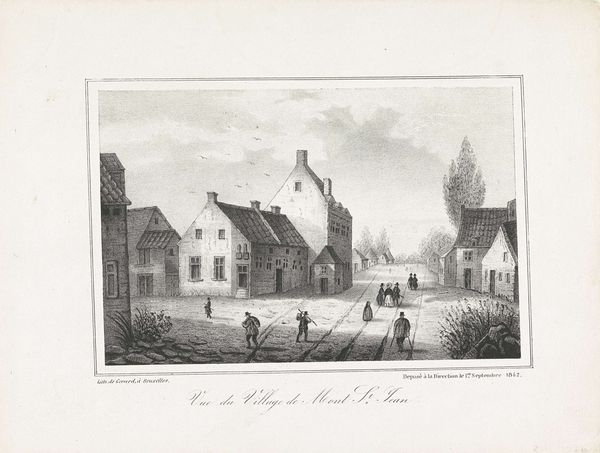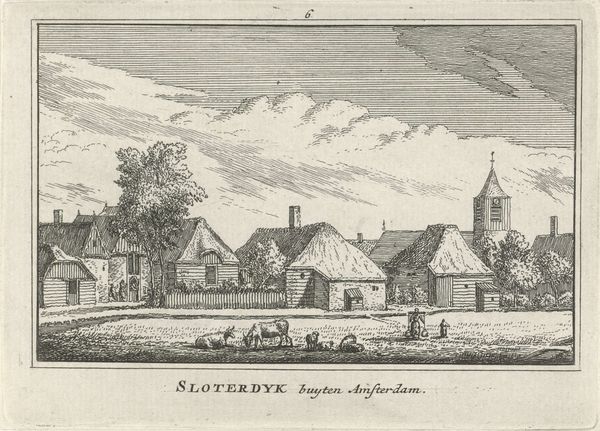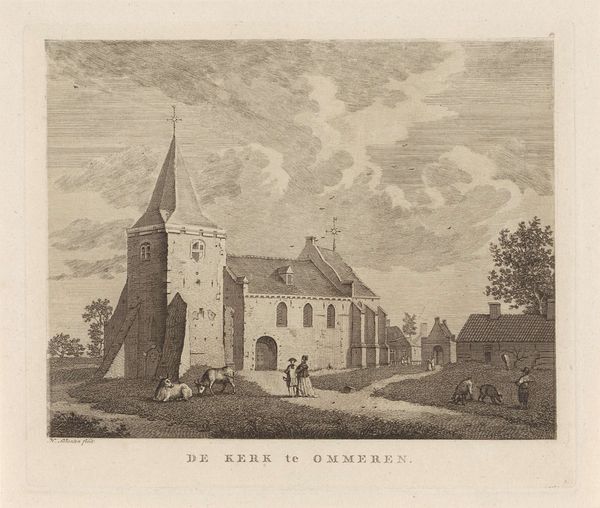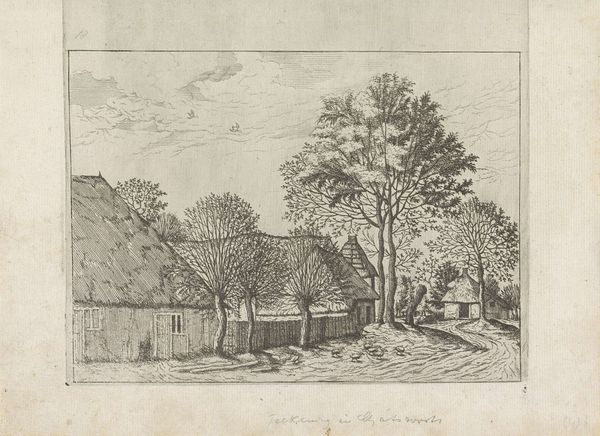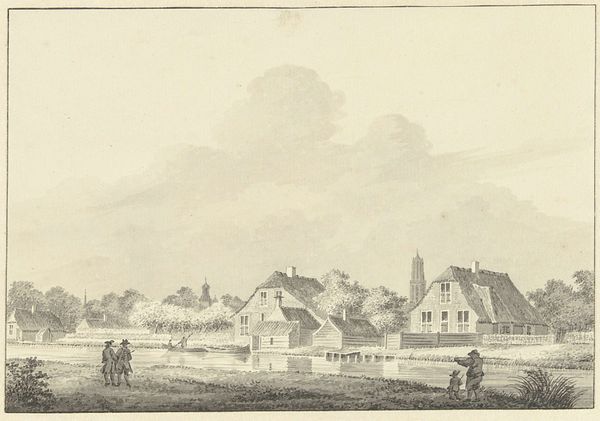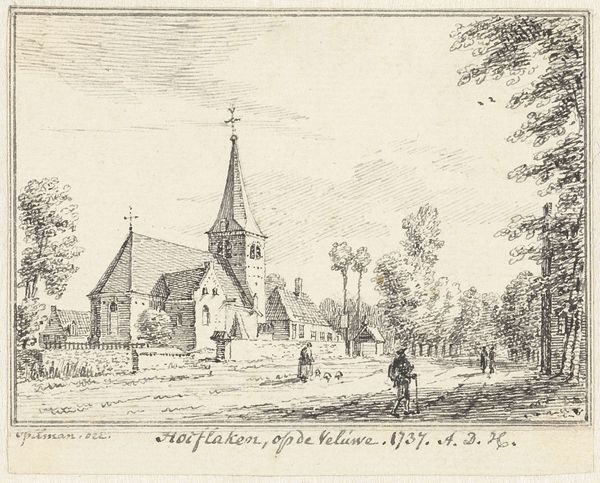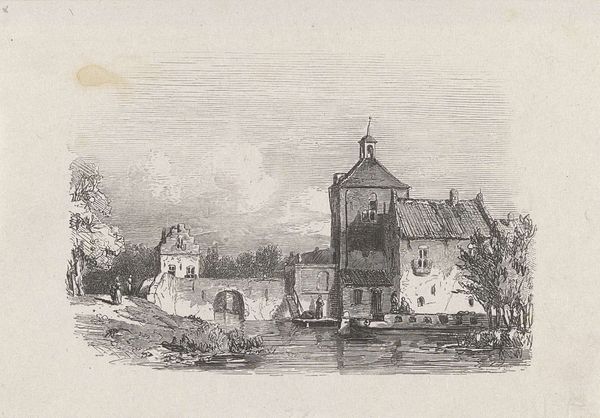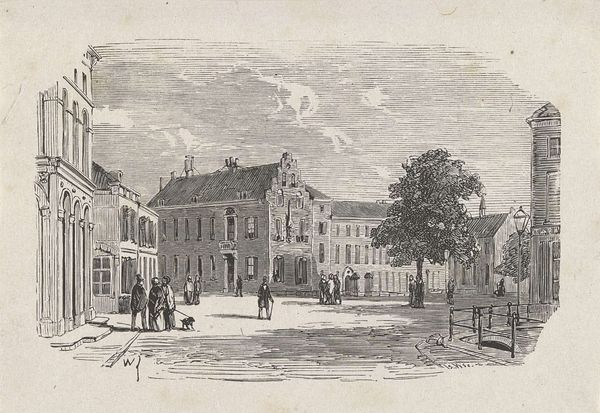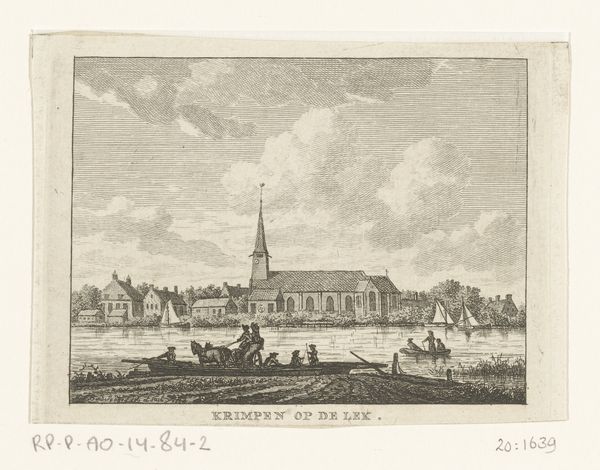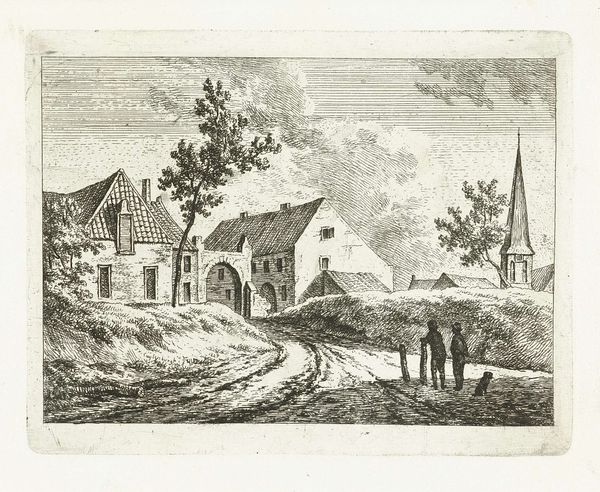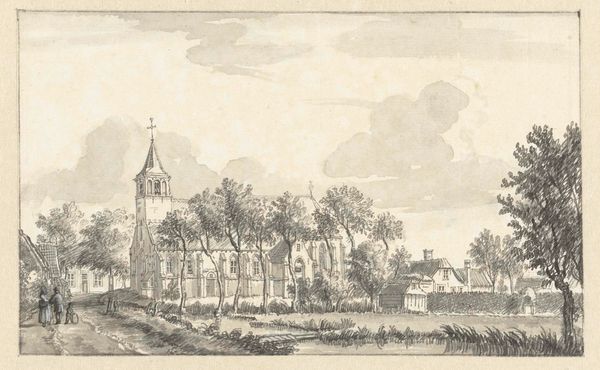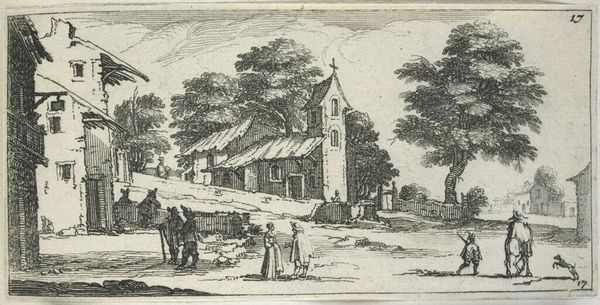
print, etching, engraving
#
dutch-golden-age
# print
#
etching
#
landscape
#
genre-painting
#
engraving
Dimensions: height 80 mm, width 115 mm
Copyright: Rijks Museum: Open Domain
Curator: This print, created sometime between 1727 and 1733, is titled "Gezicht op de oude kapel te Zuilen, 1615," or "View of the Old Chapel at Zuilen, 1615," and is by Abraham Rademaker. It’s currently held in the collection of the Rijksmuseum. Editor: It’s immediately striking, with this feeling of humble piety about it. A very orderly image rendered in black and white—almost like a carefully sketched memory. Curator: Yes, and that sense of memory is important here. While made in the 18th century, Rademaker takes us back to the early 17th. The image of the chapel, with its visible cross, speaks to the enduring power of faith and perhaps also to simpler times, as seen through a later lens. The little bell tower adds a layer of local character, like a whispered story about the town. Editor: Absolutely. I'm fascinated by how the engraving technique lends itself to representing the building materials. Look at how the artist conveys texture and the wear and tear through meticulous lines, giving the chapel this lived-in quality. I can almost feel the cool stone and the weight of those roof tiles. Curator: The positioning of the people heading towards or away from the chapel, especially in contrast to the empty doorway of the house across the way, offers a compelling visual dichotomy. They become symbols of communal faith versus perhaps the solitary life. Rademaker sets the stage for reflecting on the nature of belief and belonging. Editor: I wonder about the social context of this work—etchings and engravings were relatively accessible art forms. Consider the role that these prints played in documenting architecture and social life. This piece hints at a community and offers the audience of the time a connection to places and ways of life they might not have otherwise experienced. Curator: So we're not just viewing a building but engaging with an artifact representing continuity—a testament to community resilience across the decades. It asks us to reflect on what remains constant versus what fades. Editor: Precisely! And focusing on the materials and the printmaking process allows us to recognize this image as an artifact, carrying historical and cultural significance beyond its immediate aesthetic appeal.
Comments
No comments
Be the first to comment and join the conversation on the ultimate creative platform.
